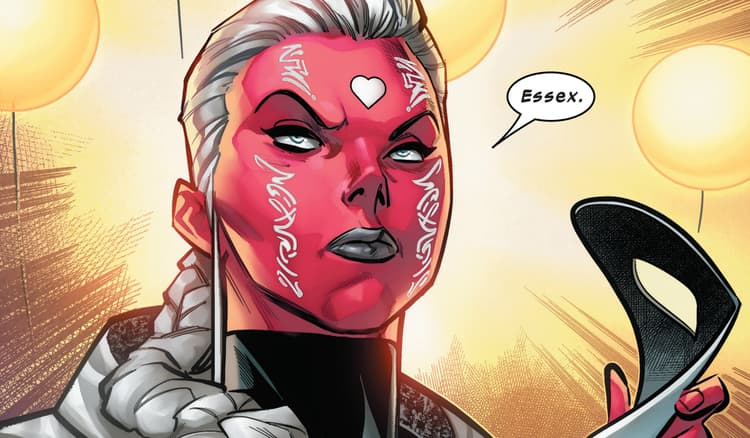The complex and enigmatic character of Mr. Sinister has been a longstanding presence in the X-Men universe, captivating readers with his Machiavellian schemes and intricate backstory. As the Krakoan Era reshapes the landscape of mutantkind, writer Kieron Gillen sheds light on the foundational influence of “The Further Adventures of Cyclops and Phoenix” in shaping the portrayal of Mr. Sinister during this transformative period.
The Rosetta Stone of Mr. Sinister’s Origin
Published in 1996, “The Further Adventures of Cyclops and Phoenix” by Peter Milligan and John Paul Leon serves as the cornerstone of Mr. Sinister’s origin story. Chronicling the emergence of the villainous figure, the miniseries elucidates his Victorian origins and his entanglement with the ancient mutant Apocalypse. Gillen describes it as the “Rosetta Stone” for understanding his subsequent 19th-century Sinister narratives, highlighting its profound impact on shaping the character’s trajectory.
Shaping the Krakoan Era
Gillen’s remarks underscore the enduring significance of “The Further Adventures” in shaping the narrative arc of Mr. Sinister within the Krakoan Era. Despite its overshadowing by other narratives of the 1990s, the miniseries laid the groundwork for major developments in Sinister’s character, serving as a touchstone for subsequent reinterpretations. The Krakoan Era redefines Sinister, positioning him as the formidable antagonist he was always destined to become.
Recognizing Crucial Contributions
While seminal works like Claremont’s and Hickman’s are celebrated for their contributions to X-Men lore, Gillen emphasizes the importance of acknowledging lesser-known stories like “The Further Adventures.” These narratives, though often overlooked, play pivotal roles in shaping the overarching narrative and character evolution. Peter Milligan’s contributions, exemplified by this particular story arc, are integral to understanding the depth and complexity of the X-Men mythos.
As the Krakoan Era draws to a close, it becomes evident that the legacy of Mr. Sinister is intricately intertwined with the narrative threads woven in “The Further Adventures of Cyclops and Phoenix.” Through Gillen’s insights, readers gain a deeper appreciation for the foundational influence of this classic storyline, reaffirming its status as a seminal work in X-Men history. As the X-Men saga continues to evolve, the contributions of creators like Peter Milligan serve as guiding lights, illuminating the path for future storytellers in the mutant universe.
FAQ
What is “The Further Adventures of Cyclops and Phoenix,” and why is it significant in the context of the X-Men universe?
“The Further Adventures of Cyclops and Phoenix” is a four-issue miniseries written by Peter Milligan and illustrated by John Paul Leon, published in 1996. It delves into the origin story of Mr. Sinister, a prominent villain in the X-Men mythos. The series explores Sinister’s Victorian origins and his connection to the ancient mutant Apocalypse, laying the groundwork for subsequent interpretations of the character.
How has “The Further Adventures of Cyclops and Phoenix” influenced Kieron Gillen’s portrayal of Mr. Sinister during the Krakoan Era?
Kieron Gillen, a prominent writer in the X-Men franchise, has cited “The Further Adventures” as a primary influence on his depiction of Mr. Sinister during the Krakoan Era. Gillen describes the series as the “Rosetta Stone” for understanding Sinister’s character, particularly in his 19th-century iterations. The miniseries provided a foundational understanding of Sinister’s origins and motivations, shaping subsequent narratives within the Krakoan Era.
How does “The Further Adventures of Cyclops and Phoenix” contribute to the overarching narrative of the X-Men universe?
While “The Further Adventures” is often overshadowed by other X-Men stories of the 1990s, its contributions to the franchise lore are significant. The series elucidates crucial aspects of Sinister’s backstory, including his origins as a Victorian scientist and his association with Apocalypse. These elements have informed subsequent storylines and character developments, making “The Further Adventures” an integral part of the X-Men mythos.
What role does Mr. Sinister play in the Krakoan Era, and how has his character evolved over time?
In the Krakoan Era, Mr. Sinister emerges as a formidable antagonist with a complex agenda. Building on the foundation established in “The Further Adventures,” Sinister’s character undergoes significant evolution, culminating in his portrayal as a revolutionary scientist and orchestrator of intricate schemes. His role as a primary antagonist reflects the ongoing evolution of the X-Men universe and the intricate interplay of characters and factions within it.
How do lesser-known X-Men stories like “The Further Adventures of Cyclops and Phoenix” contribute to the broader understanding of the X-Men mythos?
While iconic works by creators like Chris Claremont and Jonathan Hickman receive widespread recognition, lesser-known stories like “The Further Adventures” play a crucial role in expanding the depth and complexity of the X-Men universe. These narratives provide essential context, enriching the overarching narrative and offering new insights into beloved characters like Mr. Sinister. Recognizing the contributions of such stories enhances our understanding of the X-Men mythos and its enduring legacy.
